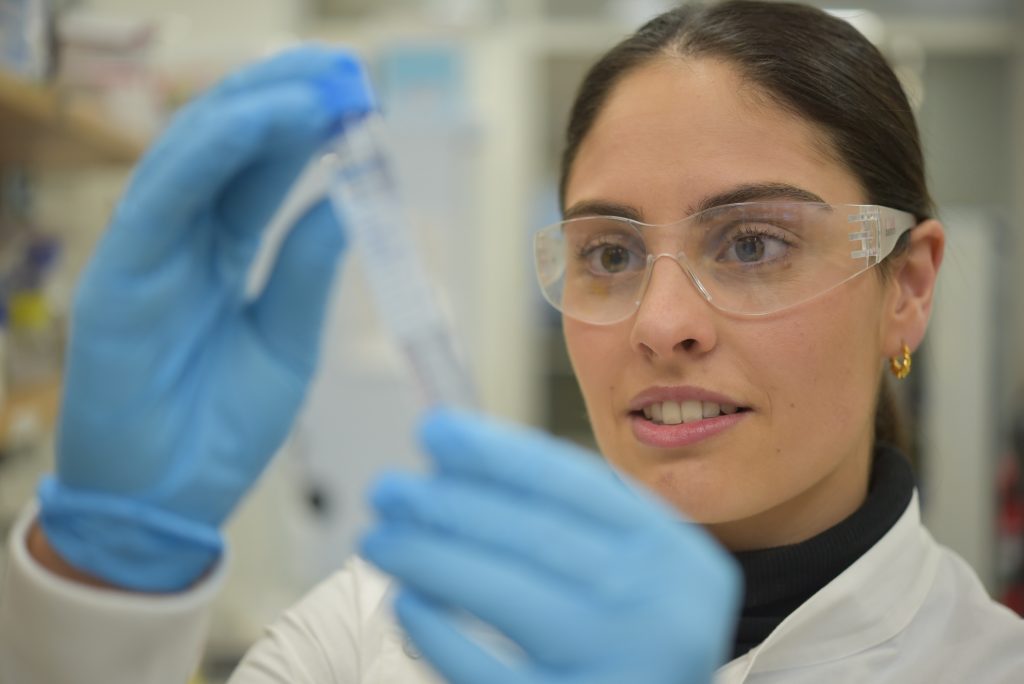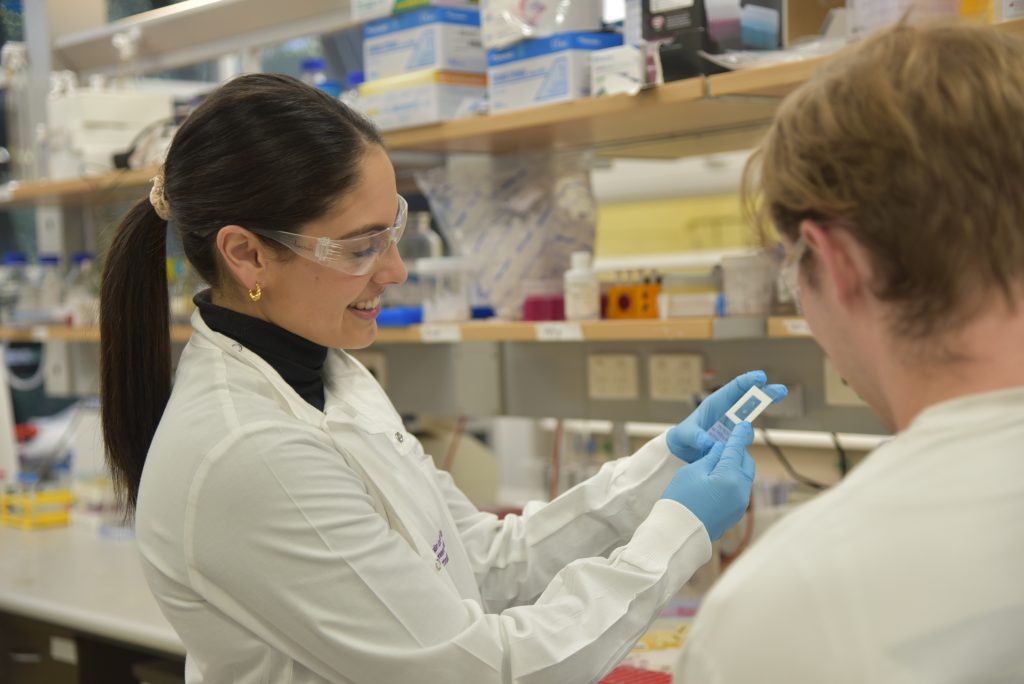Biomedical student engineer Michaela George is working to enhance the quality of life for burn victims and chronic wound patients.
While most high school students dart between ideas about their futures, Michaela George had her sights set on one particular field: biomedical engineering.
“While I was in high school, I became fascinated by tissue engineering and spoke with researchers about the regeneration of functional tissue around different prosthetic devices,” George told create.
This interest eventually led her to pursue a Bachelor of Chemical and Biological Engineering at the University of Queensland and, now, a PhD at the Australian Institute of Bioengineering and Nanotechnology.

“I’m working in the burns, skin and wounds team, led by Dr Jason Brown at the Herston Biofabrication Institute within the Royal Brisbane Women’s Hospital,” she explained. “They’re very progressive and open to new therapeutics. It’s a great space to be in.”
George’s passion is obvious.
“I want to be at the forefront of research, pushing boundaries.”
Back to basics
George underscored the importance of returning to fundamentals to assess what is happening in the cells of healthy skin tissue.
“That process is modelled in the materials I am creating, and is informing how we build future therapeutics,” she explained. “There’s a lot to suggest that the immune system dictates the process of wound healing.
“If you take diabetic ulcers, for example, they are a misregulation in your immune response. We’re looking at how we can target that immune response to get it to behave in a way that healthy tissue would behave.
“My research approaches this from a different angle. Rather than biochemical pathways in cells, we are using mechanobiology, an emerging field that looks at how cells respond to biophysical or mechanical stimuli.”
Consider astronauts or individuals who are bedridden; they experience a loss of mechanical loading which leads to functional changes in their bone cells, George explained.
“The project is attempting to understand what mechanical or biophysical cues are controlling immune cells so that we can tailor these materials to have ultimate control over immune cells in a wound environment.”

Synthetics and snake venom
George works with two types of materials: one synthetic, the other biological.
“Both of them mimic what’s going on in healthy tissue,” she explained. “For both of these materials we have a precise controller, making our research quite unique because we have intricate control over each different property.
“You can change just one property at a time to understand its exact effect on the cell and how to manipulate it for a better response.
“We take components from blood – something we rely on the Red Cross for – and snake venom proteins to control the micro architecture of the material.”
In this process, George and her team are “learning how to control immune cells that aren’t behaving as they should”.
What next?
George said that it is now possible to achieve biophysical control of the immune cells, in confirmation of her hypothesis.
“I’ve created a larger panel of materials so that we can continue to test more things and at increasingly precise levels,” she said.
“The hope is to progress into animal testing and clinical studies so that it can be commercialised and be of tangible value to patients.
“Ultimately, I’m motivated by the understanding that this research is fundamental and will have an impact beyond benchtop discovery.”



